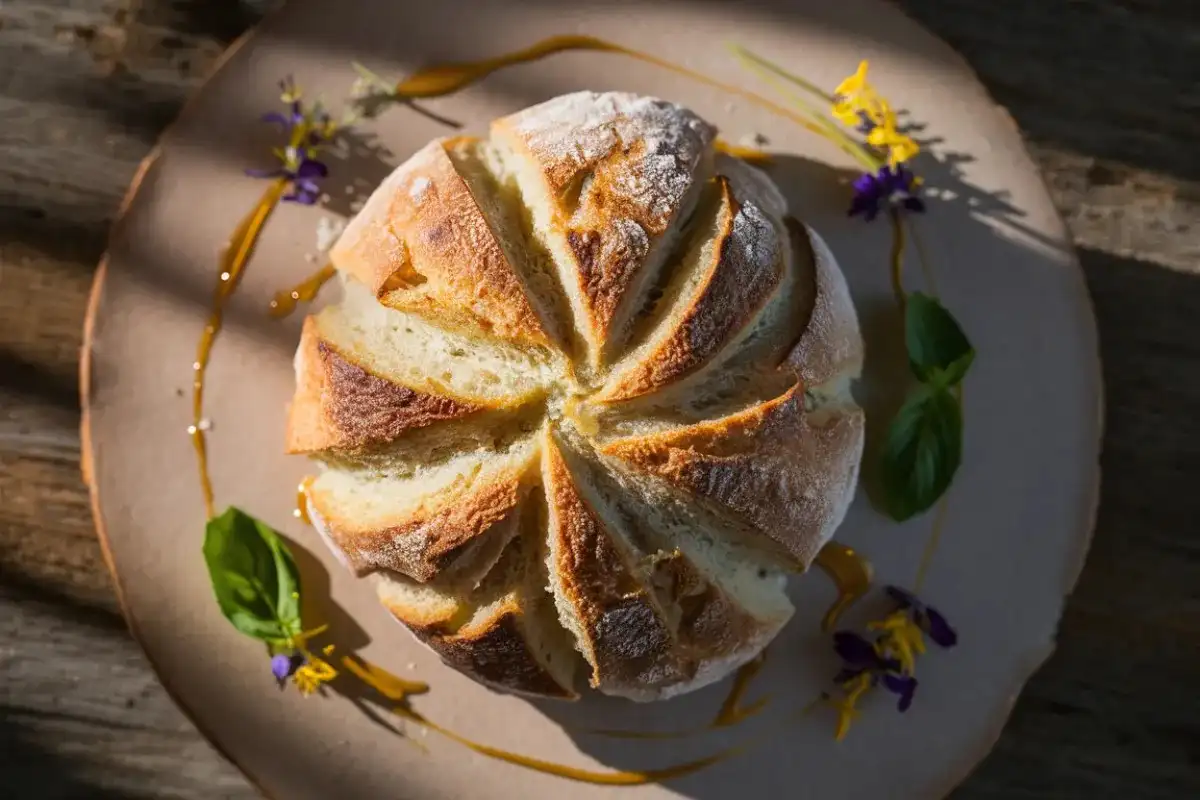Sourdough baking is a rewarding hobby that many home bakers embrace for its unique flavors and artisanal qualities. However, maintaining a sourdough starter comes with its own set of challenges, including managing the sourdough discard. Discard is a natural byproduct that occurs when feeding your sourdough starter. One common question among bakers is, “How do you tell if your discard is bad?” Knowing the signs of spoilage and understanding how to store and use sourdough discard properly can help maximize its potential in your kitchen.
What Is Sourdough Discard?
Sourdough discard refers to the portion of sourdough starter that is removed when the starter is fed with fresh flour and water. This process of discarding is necessary to keep the acidity levels in balance and prevent the starter from becoming too large to manage. Many home bakers are hesitant to throw away this discard because it still contains active cultures, flavor, and nutrients.
Instead of disposing of sourdough discard, it can be repurposed in many creative ways. From adding tangy notes to pancakes and waffles to serving as a base for crackers, the possibilities are nearly endless. However, to make the most out of it, you need to know how to tell if sourdough discard is bad.
Why Proper Discard Management Matters

Proper management of sourdough discard is crucial for a few reasons:
- Reduces Waste: Reusing sourdough discard in various recipes helps reduce food waste. For ideas on reducing waste, check out these tips on managing sourdough discard.
- Enhances Flavor: Incorporating discard into baked goods and other dishes can impart a unique flavor profile.
- Saves Money: Using discard instead of fresh ingredients for certain recipes can save money over time.
However, like any food product, sourdough discard can spoil if not stored or managed correctly. Understanding how to tell if sourdough discard is bad will help you keep your discard fresh and usable.
How to Properly Store Sourdough Discard
Effective storage is the first line of defense against spoilage. There are several methods to store sourdough discard to prolong its shelf life and maintain its quality:
1. Room Temperature Storage
Storing sourdough discard at room temperature is convenient if you plan to use it within a short period, typically within a day or two. This method is ideal for recipes that call for fresh discard, like pancakes or flatbreads, where the tangy flavor of the discard can enhance the final product.
- Best Practices for Room Temperature Storage:
- Keep the discard in a covered container to prevent exposure to air and contaminants.
- Place the container in a cool, dry place away from direct sunlight and heat sources.
- Use the discard within 24-48 hours to ensure freshness.
2. Refrigeration
Refrigeration is the most common method for storing sourdough discard for a more extended period, generally up to a week. This approach slows down the fermentation process, keeping the discard relatively stable.
- Refrigeration Tips:
- Store the discard in an airtight container to avoid moisture loss and contamination.
- Label the container with the date you stored it, so you can keep track of how long it has been in the fridge.
- For best results, stir the discard occasionally to redistribute the yeast and bacteria.
For a more comprehensive understanding of how long sourdough discard lasts in the fridge, visit this detailed guide on storing sourdough discard.
3. Freezing
Freezing is an excellent option if you don’t plan to use the discard within a week. Frozen sourdough discard can last for several months without significant quality degradation. It’s also a great way to stockpile discard for larger baking projects in the future.
- Freezing Tips:
- Portion the discard into small, useable quantities before freezing. This makes it easier to thaw only what you need.
- Use freezer-safe bags or containers to store the discard. Make sure to remove as much air as possible to prevent freezer burn.
- Label the containers with the date of freezing and the quantity stored.
By properly managing how you store your sourdough discard, you can ensure it remains safe to use while reducing waste. Knowing how to tell if sourdough discard is bad is key to avoiding any unpleasant surprises.
Signs That Your Sourdough Discard Is Bad
There are several ways to tell if your sourdough discard has gone bad. It’s essential to regularly check for signs of spoilage, especially if the discard has been stored for an extended period.
1. Visual Indicators
The appearance of sourdough discard can tell you a lot about its condition:
- Mold Growth: Look for any mold growing on the surface, which can appear as fuzzy spots that are green, black, pink, or even white. Mold indicates that the discard is spoiled and should not be used.
- Discoloration: Discard should have a consistent color. Any drastic change, such as a dark or greyish hue, might suggest that it has gone bad.
- Separation: If you notice a layer of liquid on top (called hooch), this is generally not a sign of spoilage but an indication that the discard is hungry and needs feeding. However, if the liquid is dark or the discard has a slimy texture, it is likely spoiled.
2. Smell Indicators
A healthy sourdough discard should have a pleasant, tangy aroma that reflects its natural fermentation. Any smell that deviates from this, such as a foul, rancid, or ammonia-like odor, is a warning sign that the discard has gone bad. Remember that sourdough discard naturally smells slightly sour due to the presence of lactic acid bacteria, but it should never smell rotten or overly pungent.
3. Texture Changes
The texture of your discard can also reveal its quality. Fresh discard will generally be smooth, with a dough-like consistency. If the texture becomes excessively slimy or runny, this could indicate the presence of harmful bacteria. Conversely, if it becomes hard or dry, it is no longer viable for baking purposes.
4. Presence of Pests or Unusual Growth
Sometimes, discard left out for too long or improperly stored can attract pests like fruit flies or develop strange growths such as fuzzy molds or yeast overgrowth. If you notice any of these signs, it is best to err on the side of caution and dispose of the discard.
Factors That Contribute to Spoiling of Sourdough Discard

Understanding the factors that contribute to spoilage can help you take proactive steps to keep your sourdough discard fresh for longer:
1. Environmental Conditions
The environment plays a significant role in how quickly your discard can spoil. High temperatures and humidity accelerate the fermentation process, which can lead to faster spoilage. To minimize these effects:
- Store discard in a cool, dry place.
- Consider using refrigeration or freezing to slow down the spoilage process.
2. Duration of Storage
The longer sourdough discard is stored, the more likely it is to spoil. Even under ideal conditions, discard should be used within its recommended timeframe:
- Room Temperature: Use within 1-2 days.
- Refrigeration: Best used within a week.
- Freezing: Can last several months if properly stored.
3. Ingredients Used in the Starter
The type of flour and water used in your starter can affect how quickly the discard spoils. Whole grain flours, such as rye or whole wheat, contain more oils than white flour and can cause the discard to spoil faster. Likewise, using tap water that is high in chlorine or other chemicals may affect the health of the yeast and bacteria in the starter, potentially leading to spoilage.
How to Test the Viability of Sourdough Discard
If you’re unsure whether your sourdough discard is still good to use, there are several tests you can perform to check its viability:
1. The Float Test
This is a popular method among sourdough enthusiasts:
- Fill a glass with room temperature water.
- Drop a small spoonful of discard into the water.
- If it floats, it is likely still active and usable. If it sinks, it may have lost its leavening power.
2. The Smell Test
As mentioned earlier, the smell can be a clear indicator of spoilage. Fresh discard will smell tangy and somewhat yeasty. If it smells sour or off, it’s best to discard it.
3. Visual and Texture Examination
Examine the discard for any of the visual signs mentioned above (mold, discoloration, unusual texture). Trust your senses; if anything looks, smells, or feels off, it’s better to be cautious and discard it.
How to Prevent Sourdough Discard from Going Bad
Here are several practical tips to keep your sourdough discard from spoiling:
1. Consistent Feeding and Maintenance
Feed your sourdough starter regularly to maintain a healthy discard. This involves removing a portion of the starter and replenishing it with fresh flour and water. Consistent feeding helps keep the yeast and bacteria active, reducing the chance of spoilage. Learn more about the benefits of feeding sourdough discard before using.
2. Proper Storage Techniques
Adhering to proper storage practices, as detailed above, will extend the life of your discard. Always use airtight containers and keep them in a cool environment to prevent spoilage.
3. Regular Use and Refreshing
To keep your discard fresh, make it a habit to use or refresh it regularly. Incorporate it into your baking schedule or store it in smaller portions to minimize waste.
Creative Uses for Sourdough Discard

Sourdough discard is incredibly versatile and can be used in various ways beyond just baking. Here are some creative ideas to maximize its potential:
1. Baking Recipes
- Pancakes and Waffles: The natural acidity in sourdough discard can add a delightful tang to your morning pancakes or waffles.
- Crackers and Flatbreads: Discard can serve as a base for savory crackers or flatbreads, adding a distinct flavor that pairs well with cheeses and dips.
- Pizza Dough: Use discard as part of the dough recipe to create a slightly tangy, chewy pizza crust.
For more ideas on creative uses, check out these sourdough discard recipes.
2. Non-Baking Uses
- Natural Cleaning Agent: The mild acidity in discard can help clean and sanitize kitchen surfaces.
- Pet Treats: Bake discard into small treats for pets; just ensure that no ingredients harmful to animals are included.
- Gardening: Use discard as a mild fertilizer by diluting it with water and pouring it over your garden soil. The yeast and bacteria can help enrich the soil.
When to Throw Out Sourdough Discard
Despite your best efforts, there may be times when you need to throw out your sourdough discard. Here are some guidelines:
- Visible Mold or Pests: If you see any mold or pests, discard the entire batch.
- Unpleasant Odor: An off-putting smell is a clear indicator that the discard is no longer good.
- Unusual Texture or Color: Changes in texture or color that don’t seem normal should prompt you to discard the batch.
Common Myths About Sourdough Discard
There are several myths surrounding sourdough discard that can cause confusion. Let’s clarify some of these misconceptions:
1. “All Discard Is Safe as Long as It’s Stored in the Fridge”
While refrigeration slows down spoilage, it does not stop it entirely. Even refrigerated discard can go bad over time.
2. “A Sour Smell Always Means It’s Gone Bad”
A mild sour smell is normal for sourdough discard due to its natural fermentation. However, a strong, foul odor is a clear sign of spoilage.
3. “Discard Can Be Used Indefinitely”
All discard has a shelf life, and using it beyond that can affect the quality of your baked goods and possibly lead to health issues. It’s best to use discard while it’s fresh.
Frequently Asked Questions
1. Can you get sick from bad sourdough discard?
Yes, consuming spoiled discard can lead to foodborne illness. Always check for signs of spoilage.
2. How long does sourdough discard last?
Depending on storage, discard can last from a few days at room temperature to several months when frozen.
3. Can you use sourdough discard if it smells bad?
No, a bad smell indicates spoilage. It’s safer to discard it.
4. What does healthy sourdough discard look like?
It should have a uniform color, smooth texture, and a slightly tangy aroma.
Conclusion
By understanding the signs of spoilage, proper storage techniques, and creative ways to use sourdough discard, you can make the most out of this byproduct of your sourdough starter. Knowing how to tell if sourdough discard is bad is crucial for maintaining its quality. Remember, the key is to keep your discard fresh and regularly check for any signs that it may have gone bad. Happy baking!

